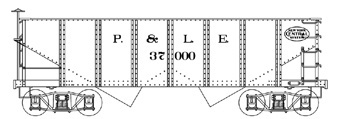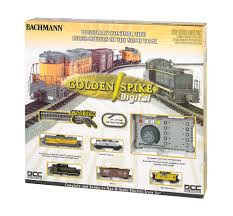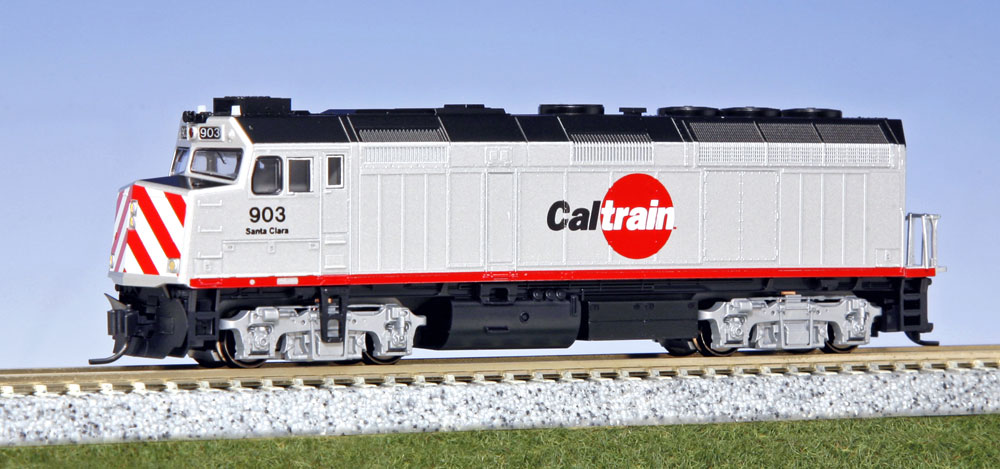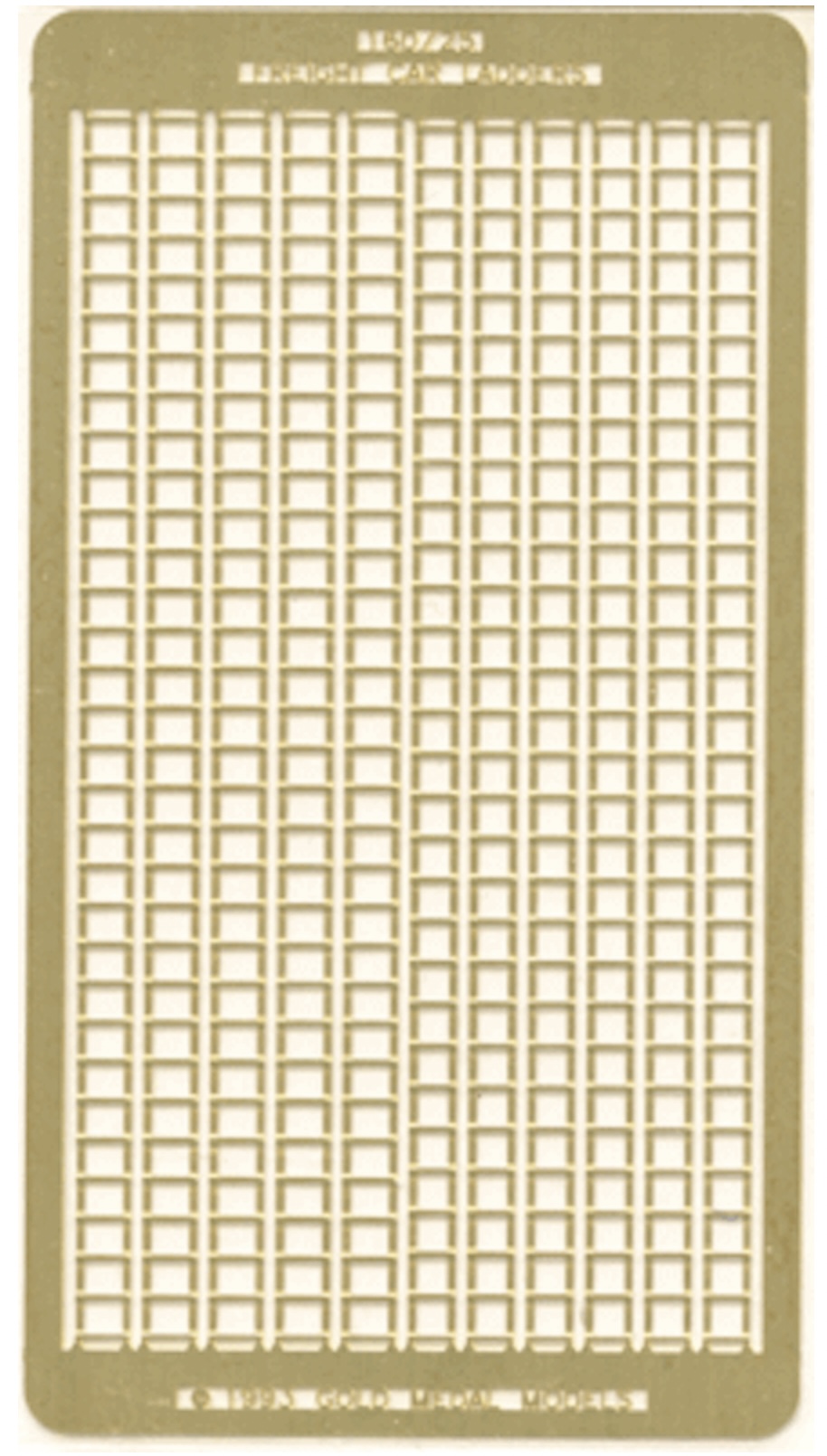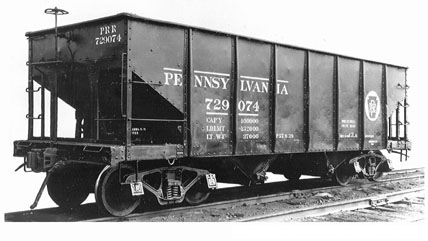Model Information: Bowser originally produced these models in kit form. However, all releases since 2007 or so are in Ready-To-Run (RTR) form. The kit form it included: a one piece plastic molded body, underframe, brake wheel, air reservoir, brake cylinder, control valve, X2f and McHenry KS couplers, plastic trucks/wheels and steel car weights.
This model comes in two variations: a vertical and a horizontal brake wheel. The ones with vertical brake wheels are delicate, so handle them with care. The plastic loads that come with the cars are low-to-mid grade quality and not up to the standards of the rest of this quite excellent car. Recent releases use high grade (MTL clone) body-mounted couplers and blackened metal wheels and are easily a nice value for their relatively low cost.
This model comes in two variations: a vertical and a horizontal brake wheel. The ones with vertical brake wheels are delicate, so handle them with care. The plastic loads that come with the cars are low-to-mid grade quality and not up to the standards of the rest of this quite excellent car. Recent releases use high grade (MTL clone) body-mounted couplers and blackened metal wheels and are easily a nice value for their relatively low cost.
Prototype History: In 1898, Pressed Steel Car Co. built the first all-steel hopper car designated the GL. The Pennsylvania Railroad would purchase several thousand of this design. Due to production backlogs at P.S.C.Co. and flaws in the initial design, the Penny came up with its own all-steel, bottom-discharge hopper car in 1904 designated the GLa. Approximately 30,000 GLa's were produced between 1904 and 1920. The Pennsy also built Gla's for numerous coal companies who were anxious for the well-built and reasonably priced cars. Until the 1960s, this design was one of the three most numerous classes of PRR freight cars. Although by this time, these cars began to rapidly disappear from the PRR roster, a few made it into the Penn Central and even Conrail rosters, lasting into the early 1980s.
Road Name History: 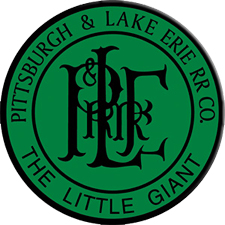 The Pittsburgh and Lake Erie Railroad (P&LE) (reporting mark PLE), also known as the "Little Giant", was formed on May 11, 1875. In 1880, William Henry Vanderbilt's Lake Shore and Michigan Southern Railway bought stock to the tune of $200,000 in the P&LE. The P&LE would stay in the Vanderbilt's New York Central system until Conrail. Company headquarters were located in Pittsburgh, Pennsylvania. The line connected Pittsburgh in the east with Youngstown, Ohio at nearby Haselton, Ohio in the west and Connellsville, Pennsylvania to the east. It did not reach Lake Erie (at Ashtabula, Ohio) until the formation of Conrail in 1976.
The Pittsburgh and Lake Erie Railroad (P&LE) (reporting mark PLE), also known as the "Little Giant", was formed on May 11, 1875. In 1880, William Henry Vanderbilt's Lake Shore and Michigan Southern Railway bought stock to the tune of $200,000 in the P&LE. The P&LE would stay in the Vanderbilt's New York Central system until Conrail. Company headquarters were located in Pittsburgh, Pennsylvania. The line connected Pittsburgh in the east with Youngstown, Ohio at nearby Haselton, Ohio in the west and Connellsville, Pennsylvania to the east. It did not reach Lake Erie (at Ashtabula, Ohio) until the formation of Conrail in 1976.
The P&LE was known as the "Little Giant" since the tonnage that it moved was out of proportion to its route mileage. While it operated around one tenth of one percent of the nation's railroad miles, it hauled around one percent of its tonnage. This was largely because the P&LE served the steel mills of the greater Pittsburgh area, which consumed and shipped vast amounts of material. It was a specialized railroad deriving much of its revenue from coal, coke, iron ore, limestone, and steel. The eventual closure of the steel mills led to the end of the P&LE as an independent line in 1992.
At the end of 1970 P&LE operated 211 miles of road on 784 miles of track, not including PC&Y and Y&S; in 1970 it reported 1419 million ton-miles of revenue freight, down from 2437 million in 1944.

The P&LE was known as the "Little Giant" since the tonnage that it moved was out of proportion to its route mileage. While it operated around one tenth of one percent of the nation's railroad miles, it hauled around one percent of its tonnage. This was largely because the P&LE served the steel mills of the greater Pittsburgh area, which consumed and shipped vast amounts of material. It was a specialized railroad deriving much of its revenue from coal, coke, iron ore, limestone, and steel. The eventual closure of the steel mills led to the end of the P&LE as an independent line in 1992.
At the end of 1970 P&LE operated 211 miles of road on 784 miles of track, not including PC&Y and Y&S; in 1970 it reported 1419 million ton-miles of revenue freight, down from 2437 million in 1944.
Brand/Importer Information: On May 1, 1961, Bowser was purchased by Lewis and Shirlee English and moved from Redlands, CA to their basement in Muncy, PA. The original Bowser Manufacturing Co first advertised in the model railroad magazines in November 1948. At that time, the company had only one (HO Scale) engine, the Mountain, which had a cast brass boiler that is no longer available. It was sometime later that Bowser (Redlands) developed the NYC K-11 and the UP Challenger. The molds were made by K. Wenzlaff who introduced himself at the MRIA Show in Pasadena, CA in 1985 These two locomotives are still current production.
Bowser entered into N Scale in 1998 with their acquisition of the Delaware Valley Car Company, a manufacturer of N scale freight cars.
Bowser entered into N Scale in 1998 with their acquisition of the Delaware Valley Car Company, a manufacturer of N scale freight cars.
Item created by: Lethe on 2015-10-02 10:12:27. Last edited by George on 2024-01-26 20:28:52
If you see errors or missing data in this entry, please feel free to log in and edit it. Anyone with a Gmail account can log in instantly.
If you see errors or missing data in this entry, please feel free to log in and edit it. Anyone with a Gmail account can log in instantly.


